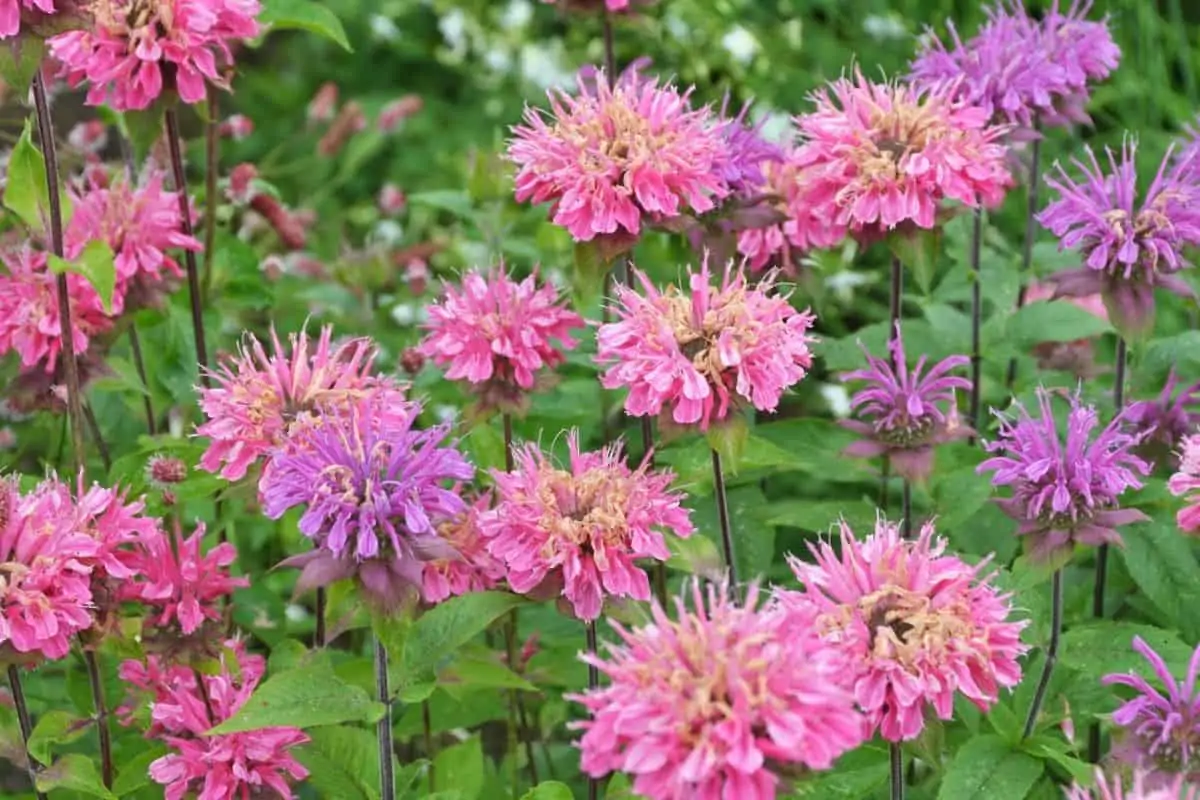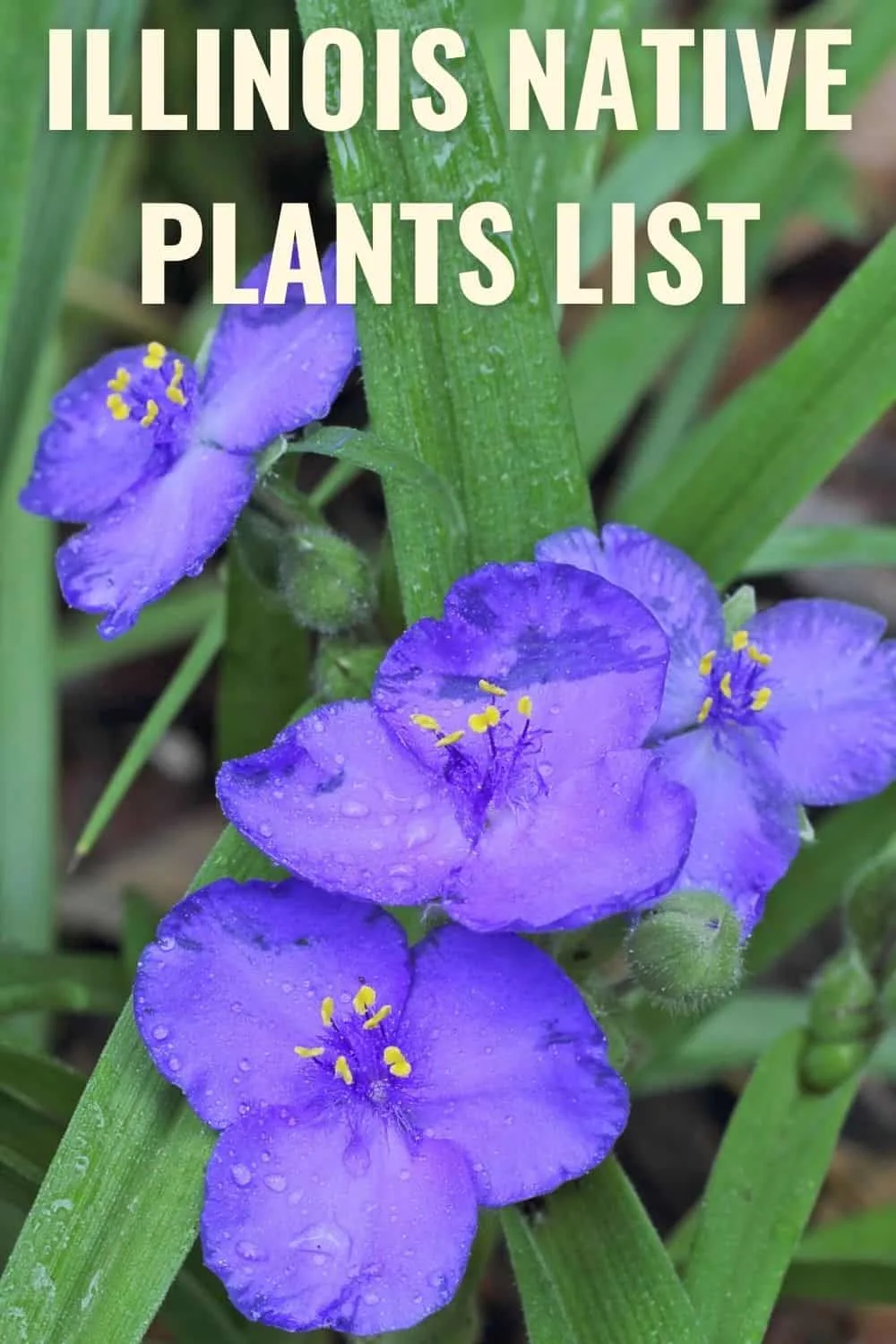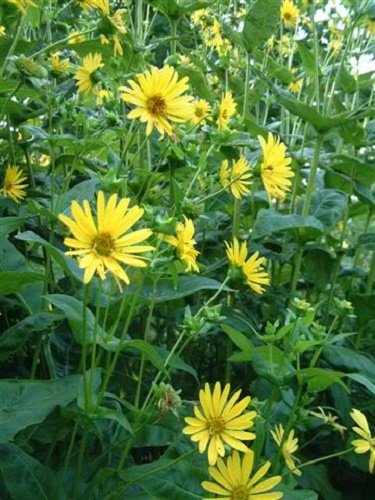If you’re planning a new garden or new landscaping in Illinois, it just makes sense to go with native plants. There are many reasons to choose native plants over others when given the chance, and they are also easier to care for and typically more low maintenance. We’ll discuss this more after we tell you about some great garden plants to consider.
Our Illinois native plants list will help you choose garden or landscaping plants that are already adjusted to the conditions and climate in your area. This means you won’t have to work so hard to keep them thriving. It also has many benefits to the local ecosystem, such as providing essential habitats and assisting in pollination.

Illinois Native Plants List
Illinois native plants have adapted to the specific unique weather conditions and habitat in the area. This can include:
- Hot, dry summers and cold, windy winters
- Soils that vary from clay, sand, or loam
- Native insects – since they evolved together with native plants
- Local plant disease – since they evolved together
- Hydrology – can vary from dry, mesic, or wet
Here is a list of nine great native plants that will be perfect in your garden:
1. Blue flag iris (Iris virginica)
Blue flag iris is an Illinois native that thrives in wet meadow areas. Hummingbirds feed on their nectar and it also provides great cover for amphibians, and a habitat for snakes, insects, and other local critters.
It prefers wet meadow zones and can even tolerate seasonally flooded to up to 3 inches. It won’t withstand constant inundation if it’s over 6-8 inches. Blue flag iris grows up to 2 1/5 feet, it blooms purple or deep blue from May to July.
2. New England aster (Aster novae-angliae)
New England aster is another nice choice for Illinois. It provides great waterfowl coverage and also attracts honeybees and butterflies for pollination.
The attractive blooms are violet/purple with a yellow center that makes them very distinguishable from other flowers. If grown in a greenhouse, they can have more color variance. They like partial to full sun and mature plants can grow from one foot to 6 1/2 feet tall.
3. Big bluestem (Andropogon gerardii)
This plant is also sometimes called turkey foot. With big bluestem you get a tall, blooming perennial grass that can really work in many Illinois landscapes.
It has a wide pH range, meaning it works with lots of different soil types and it’s pretty low maintenance once it is established. It can take more effort to establish from seed, but propagation is fairly easy.
Fall planted seeds will germinate in April. At maturity, it stands about 3-9 feet tall and the bronze to gray-blue blooms happen from July to September, meaning you have several months of beautiful flowers in your garden.
4. Blue vervain (Viola pedata)
Blue vervain is another popular choice in Illinois gardens. The seeds are eaten by wildlife and the plants also attract butterflies for pollination. Small mammals will also eat the shoots. It’s a good pioneer species and grows well under the right conditions.
At maturity, it can grow up to 5 feet tall. It has a preferred pH of 6-7, and it prefers full sun. The blue to purple flowers bloom from July to September.
5. Spiderwort (Tradescantia ohiensis)
Spiderwort is a quick-spreading, pretty plant that has also gained popularity as a houseplant. This is a dry to mesic species so be careful of too much water or soggy soil.
It does have some tolerance for early seasonal flooding, although it really only withstands short durations. It is, however, very drought tolerant. Can do well on higher ground or slope. Available as seed or plants and typically low maintenance.
It flowers purple in May to mid-October, on average.
6. Compass plant (Silphium laciniatum)
Another choice is the compass plant. This is usually a mesic prairie species that don’t do well in too much water in artificial situations. However, it is sometimes seen in sedge meadows and wet prairies in its native state.
Songbirds will eat the seed and deer will also graze on the plant. It’s fast-growing, so typically this isn’t a big issue, especially if you’re planting native for the wildlife. It also attracts butterflies and gives a food source to the silphium weevil.
It likes a pH of 4.5-7.5, flowers yellow from July to September and prefers full sun.
7. Wild bergamot (Monarda fistulosa)
Wild bergamot is another mesic prairie species. It can tolerate some water but not prolonged flooding. Early establishment is fairly easy and it’s low maintenance once it takes off.
It grows up to three feet at maturity, and the flowers can be pink, purple, lavender, and sometimes white. They bloom from August to October. It can also be established from cuttings.
8. Black willow (Salix nigra)
Black willow might work in upper-shoreline zones and also for stabilization of stream banks. It is a natural floodplain species. If you have flooding zones on your property where other plants cannot survive, this is a good choice.
It has a rapid growth rate of three to six feet per year, and it can grow up to 90 feet at full maturity. Black willow is classified as a deciduous tree. It has yellow-green flowers that bloom from April to May and it prefers full sun.
9. Common mountain mint (Pycnanthemum virginianum)
Common mountain mint is another great option for your garden. It can be established from seed, and it grows very quickly. Propagation can work with cuttings in the spring.
It attracts butterflies and other pollinators to your garden and is good for the environment. It prefers wet, saturated soil in mesic prairie zones or wet prairies. At maturity, it can grow from 20-36 inches tall. It has a pH of 5-7, and it flowers white with purple spots from July to August.
Now let’s look at some ideas for using these and other native plants in your garden.
Native Flowers Of Other States
Great Garden Ideas
If you’re planning a new garden or want to spruce up your existing garden and landscape, here are some ideas to help you make the most of it.
Use vertical planting
You can use vertical planting by fixing pots to walls or using climbing plants, or plants that grow upwards, to really get the most out of your garden and give the impression it’s growing faster. There are flowers, small trees, and shrubs that grow upwards and will fill in black space within the garden landscape more quickly.
Use potted plants and flowers
Another technique (which can also play along with the first tip) is to use container gardening and then arrange it in such a way that your garden feels more fleshed out more quickly. You can use all types, shapes, sizes, and colors of pots and then arrange them however you wish. Colorful flowers in colorful pots can really boost a beginner or low-budget garden area.
Go big for quick impact
When you want a big impact on your new garden or landscape, invest in the biggest trees or large shrubs you can afford. It will cost you more to buy larger, already-established trees and shrubs, but it can fill out the space more quickly and also give a foundation for slower-growing plants to fill in.
Understand the importance of native
Native plants have already adapted to the local environment, as we described above. They will rarely need irrigation after they are established. They don’t need any fertilizer because they’ve already adapted to the soil conditions of the area, and they never need pesticides. Again, they have evolved alongside local insects so you can let local wildlife and insects feed undisturbed.
With these great ideas, you’re ready to start planning your own garden or landscaping project. Keep in mind that just because a plant is native does not mean it’s the best choice for your garden.
While it’s great to start with native plants and narrow down from there, you still want to choose plants that meet the needs of your objectives and also your specific area. If you’re in doubt, you can chat with a local nursery expert or landscaper to help you.











Wisconsin Native Plants List: 18 Beautiful Flowers For Gardening
Thursday 3rd of August 2023
[…] Illinois native plants […]
Michigan Native Plants List: 14 Amazing Landscaping Choices
Friday 2nd of June 2023
[…] Illinois native plants […]
Kentucky Native Plants List: 8 Low Maintenance Ideas For Your KY Landscape
Tuesday 14th of February 2023
[…] Illinois native plants […]
Indiana Native Plants List: 21 Low Maintenance Garden Ideas
Tuesday 14th of February 2023
[…] Illinois native plants […]
14 Worst Invasive Plants In Illinois (And 28 Natives To Plant Instead)
Tuesday 14th of February 2023
[…] a list of Illinois native plants to replace your invasives […]